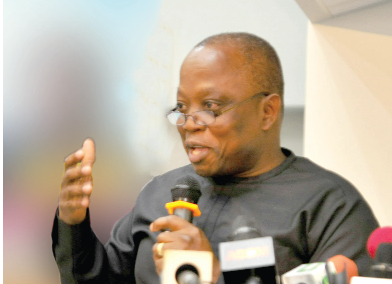Ghanaians are set to enjoy significant relief at the fuel pumps from November 1, 2025, as the Chamber of Oil Marketing Companies (COMAC) projects a sharp decline in petroleum product prices nationwide.
The chamber’s latest pricing outlook report forecasts notable reductions across petrol, diesel, and liquefied petroleum gas (LPG), driven by a stronger cedi and falling global crude oil prices.
According to the report, petrol prices are expected to fall by up to 5.21 percent, bringing average pump prices down to around GH¢12.92 per litre, compared to the previous GH¢13.93.
Diesel is projected to decline by 8.13 percent, dropping to approximately GH¢13.10 per litre from GH¢14.56. Meanwhile, LPG could see a reduction of 6.66 percent, with prices expected to settle at around GH¢13.60 per kilogram.
“Petrol, diesel, and LPG pump prices are projected to fall by 3.01%–5.21%, 6.03%–8.13%, and 4.60%–6.66% respectively.
“The two-window decline is driven by lower international product prices and the cedi’s strong appreciation in October for the last quarter of the year.”
COMAC’s Oil Market Outlook
Cedi Strength Fuels Price Relief

A key factor behind the projected reductions is the cedi’s remarkable rebound in October, reversing much of its earlier losses.
COMAC noted that the local currency appreciated sharply from GHS 12.63 to GHS 11.21 per U.S. dollar during the 16th October pricing window, marking an 11.22 percent gain.
“This strong rebound in October alone nearly reversed the 13.33 percent depreciation recorded in Q3 2025, signaling renewed investor confidence and improved stability in the local currency.”
COMAC’s Oil Market Outlook
Analysts credit the appreciation to the Bank of Ghana’s policy shift toward spot foreign exchange sales, which improved liquidity and boosted efficiency in the forex market.
This intervention, according to COMAC, has enhanced dollar supply to oil importers, enabling them to price products more competitively.
Global Crude Oil Prices Fall to Five-Month Low

The chamber also attributed the downward trend in domestic prices to falling international crude oil prices, which dropped sharply by 6.49 percent, from US$67.18 to US$62.82 per barrel, reaching their lowest level in five months.
The decline, COMAC explained, was driven by “escalating U.S.–China trade tensions and growing concerns over a potential oversupply in the last quarter of 2026.”
The global slowdown in demand, particularly from the world’s two largest oil consumers, has weighed heavily on market sentiment, contributing to the bearish trend.
In line with this, international refined product prices also trended lower during the review period.
COMAC highlighted, “Product prices on the international market recorded decreases of -3.30% for petrol, -2.48% for diesel, and -2.35% for LPG,” noting that these declines directly translate into reduced import costs for Ghanaian oil marketers.
Despite the price fluctuations, Ghana’s domestic petroleum demand continues to grow. COMAC revealed that from January to August 2025, total petroleum consumption increased by 16.18 percent compared to the same period last year.
The chamber attributed this rise to a combination of economic recovery, improved power generation, and increased industrial activity.
Taxes, Levies, and Regulatory Margins Still a Key Factor

While the expected price reductions are welcome news for consumers, COMAC reminded the public that taxes and levies continue to constitute a major component of pump prices, accounting for a substantial share of the cost burden.
“Taxes remain a major source of government revenue, supporting national policies, budgets, and public expenditures.
“Statutory levies and margins provide regulators with the resources to fund their operations, develop infrastructure, and implement sector projects.”
COMAC’s Oil Market Outlook
In the first three quarters of 2025, the government introduced two major tax measures affecting petroleum products.
On July 16, 2025, the Energy Sector Shortfall and Debt Repayment Levy (ESSDRL), a GH¢1 per litre levy was implemented under Act 1141 to help address sector shortfalls and debts.
Subsequently, the Energy Sector Levies (Amendment) (No. 2) Act, 2025 (Act 1145) took effect on September 1, 2025, increasing the ESSDRL on Marine Gas Oil (MGO–Local) and introducing two additional levies, the Road Fund Levy and the Energy Fund Levy designed to curb smuggling and misuse of the MGO subsidy.
With the combined effects of a stronger cedi, falling global crude prices, and relative market stability, COMAC forecasts a period of moderate fuel prices through the end of the year.
The chamber, however, cautioned that sustained price relief would depend on the continued resilience of the local currency and global market stability.























